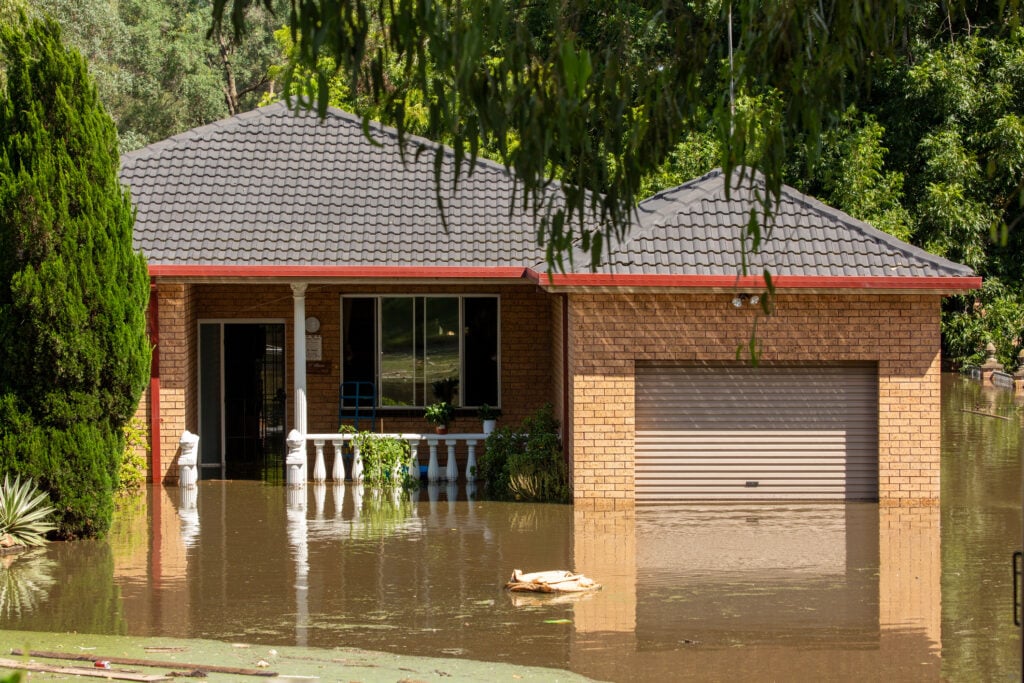When floods sweep through communities, their destructive effects are particularly damaging for private well owners. What’s more, the danger often continues long after the waters recede. Flooding can easily contaminate well water with bacteria, sewage, chemicals, and debris. Unless wells are disinfected and tested after a flood, families may unknowingly drink, cook or wash with unsafe water.
At ETR Laboratories, we want homeowners to understand the real risks to private wells from floods so they can protect their health. Well water that has been exposed to floodwaters should always be tested before it is relied on for drinking, bathing, or cooking.
Record Flooding Endangered Wells Across the Country
The last two years have brought some of the most destructive floods in recent memory. Multiple regions across the country have faced catastrophic damage:
- June 2024: Minnesota, Iowa, Wisconsin and Michigan experienced record rainfall, which breached dams and levees.
- August 2024: Connecticut, Vermont, and New York experienced 14 inches of rain that inundated communities, destroying infrastructure and sweeping contaminants into groundwater supplies.
- May 2025: North Carolina was hit by repeated storm systems, flooding farmland and contaminating nearby wells with fertilizer, pesticides, and animal waste. Maryland, Virginia, West Virginia, Pennsylvania and Washington, D.C. were also affected.
- July 2025: New Mexico suffered flash floods that caused several fatalities and heavy damage.
- July 2025: Texas faced devastating floods that not only damaged property but also affected thousands of private wells. Entire towns were swept away along the Guadalupe River.
These disasters highlight an often-overlooked reality: private wells are unprotected by municipal safeguards. Unlike public water systems, private well owners are solely responsible for ensuring their water remains safe.
How Floods Contaminate Private Water Wells
When floodwaters rise, they carry along with everything in their path—sewage from overflowing septic systems, manure from agricultural fields, petroleum from vehicles, pesticides, industrial runoff, and plant debris. Wells, especially older ones or those with shallow construction, are highly vulnerable.
Contamination can occur in several ways:
- Surface infiltration: Floodwaters leak through a loose well cap or seep through the surrounding soil.
- Structural damage: Damaged well casings let dirty water infiltrate the well.
- Pressure changes: Heavy water saturation can force contaminated groundwater into the well system.
- Electrical system damage: Flooding can disable pumps and equipment, requiring repair or replacement before water can be safely used.
Even when a well looks intact from the surface, floodwater contaminants can make the water from the well unsafe.
Contaminants You Really Don’t Want in Your Well
Flood-damaged wells require disinfection before any water is used for drinking or washing. Some wells may require inspection and repairs. The first and most important step is testing the water for contaminants. Without accurate testing from a professional lab, there’s no way to know what hazards are present.
Here’s why testing after a flood is critical:
- Bacteria and pathogens: Floods often carry E. coli, coliform bacteria, Giardia, and other microorganisms that can cause severe illness.
- Viruses and fungi: Contaminated water can spread viral infections or introduce mold spores into the home’s plumbing.
- Chemical contamination: Pesticides, fertilizers, and petroleum products can persist long after floodwaters are gone and create toxic effects on those who use the water.
- Heavy metals: Runoff may carry arsenic, lead, or mercury into groundwater, posing long-term health risks.
- Taste and odor issues: Even when the water is not harmful to health, contamination can leave water with unpleasant tastes, smells, or discoloration.
- Family safety: Children, elderly individuals, and those with compromised immune systems are especially vulnerable to waterborne illnesses.
Relying on untreated, untested well water after a flood is a gamble no family should take.
ETR Laboratories Is Your Reliable Source for Post-Flood Testing
At ETR Laboratories, we know that your family’s health depends on your private well water. After a flood, your family needs the protection of a thorough water test. We’ve developed specialized tests designed for private well owners—tests that don’t just skim the surface but look deep for bacteria, fungi, and other microorganisms, as well as hidden chemical and physical contaminants.
Our Premium Water Test will look for 113 microorganisms, chemicals, heavy metals, and much more. You’ll receive clear, professional results that tell you—in plain language—whether your water is safe to drink, cook with, and bathe in. Order the Premium Water Test today and you’ll know exactly what’s in your water and what needs to be corrected after a flood to make it safe.

